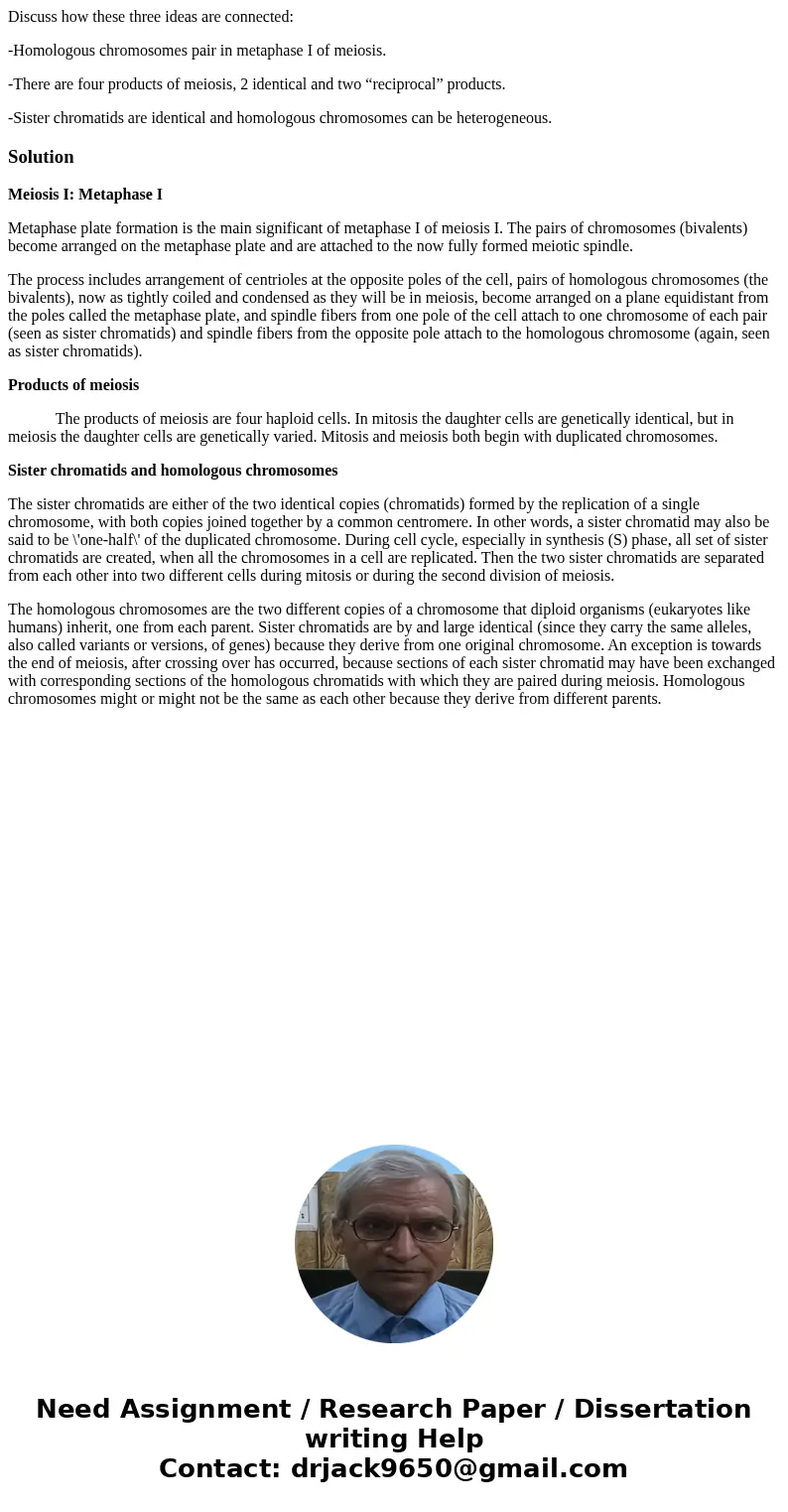Discuss how these three ideas are connected Homologous chrom
Discuss how these three ideas are connected:
-Homologous chromosomes pair in metaphase I of meiosis.
-There are four products of meiosis, 2 identical and two “reciprocal” products.
-Sister chromatids are identical and homologous chromosomes can be heterogeneous.
Solution
Meiosis I: Metaphase I
Metaphase plate formation is the main significant of metaphase I of meiosis I. The pairs of chromosomes (bivalents) become arranged on the metaphase plate and are attached to the now fully formed meiotic spindle.
The process includes arrangement of centrioles at the opposite poles of the cell, pairs of homologous chromosomes (the bivalents), now as tightly coiled and condensed as they will be in meiosis, become arranged on a plane equidistant from the poles called the metaphase plate, and spindle fibers from one pole of the cell attach to one chromosome of each pair (seen as sister chromatids) and spindle fibers from the opposite pole attach to the homologous chromosome (again, seen as sister chromatids).
Products of meiosis
The products of meiosis are four haploid cells. In mitosis the daughter cells are genetically identical, but in meiosis the daughter cells are genetically varied. Mitosis and meiosis both begin with duplicated chromosomes.
Sister chromatids and homologous chromosomes
The sister chromatids are either of the two identical copies (chromatids) formed by the replication of a single chromosome, with both copies joined together by a common centromere. In other words, a sister chromatid may also be said to be \'one-half\' of the duplicated chromosome. During cell cycle, especially in synthesis (S) phase, all set of sister chromatids are created, when all the chromosomes in a cell are replicated. Then the two sister chromatids are separated from each other into two different cells during mitosis or during the second division of meiosis.
The homologous chromosomes are the two different copies of a chromosome that diploid organisms (eukaryotes like humans) inherit, one from each parent. Sister chromatids are by and large identical (since they carry the same alleles, also called variants or versions, of genes) because they derive from one original chromosome. An exception is towards the end of meiosis, after crossing over has occurred, because sections of each sister chromatid may have been exchanged with corresponding sections of the homologous chromatids with which they are paired during meiosis. Homologous chromosomes might or might not be the same as each other because they derive from different parents.

 Homework Sourse
Homework Sourse